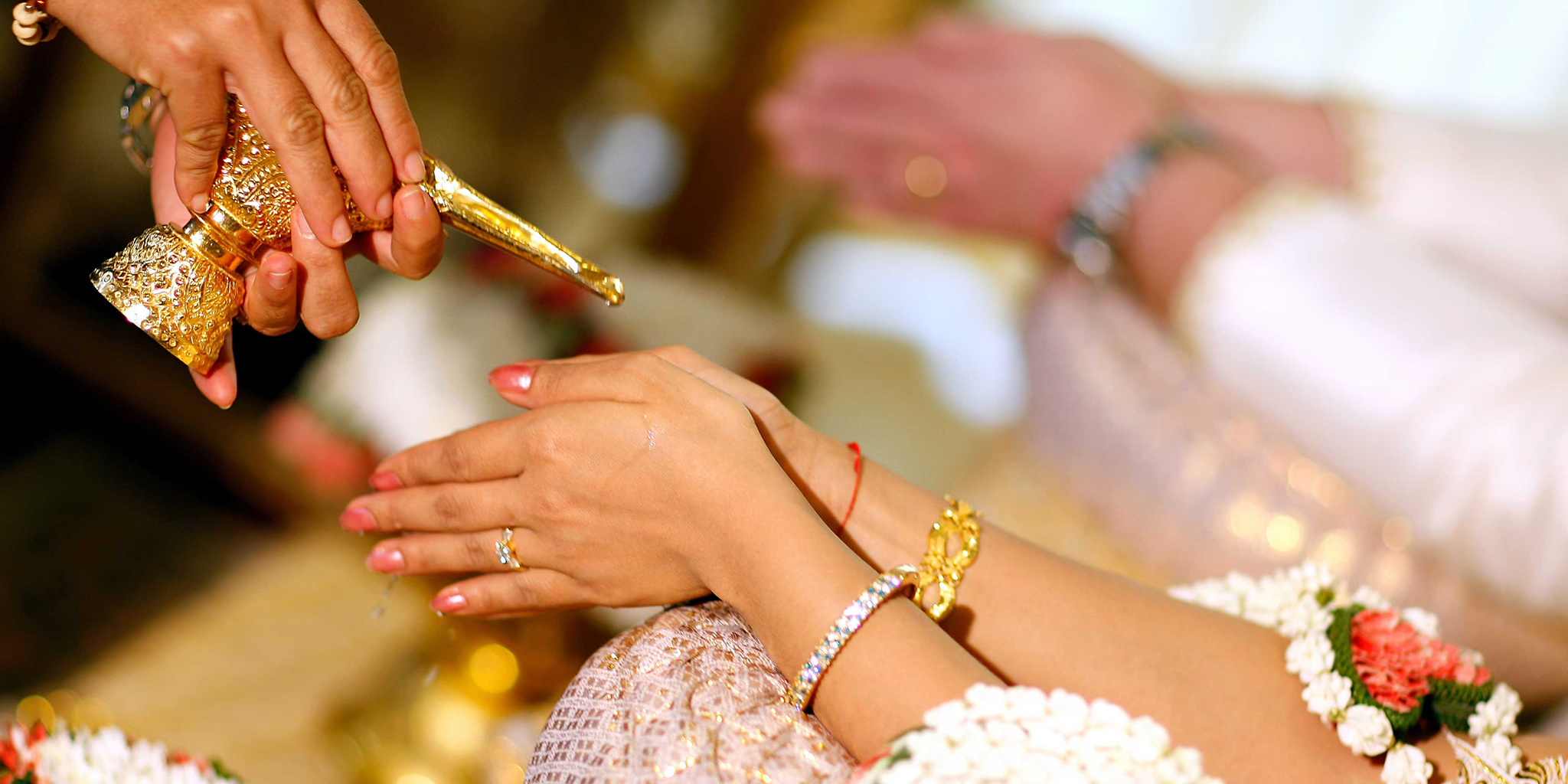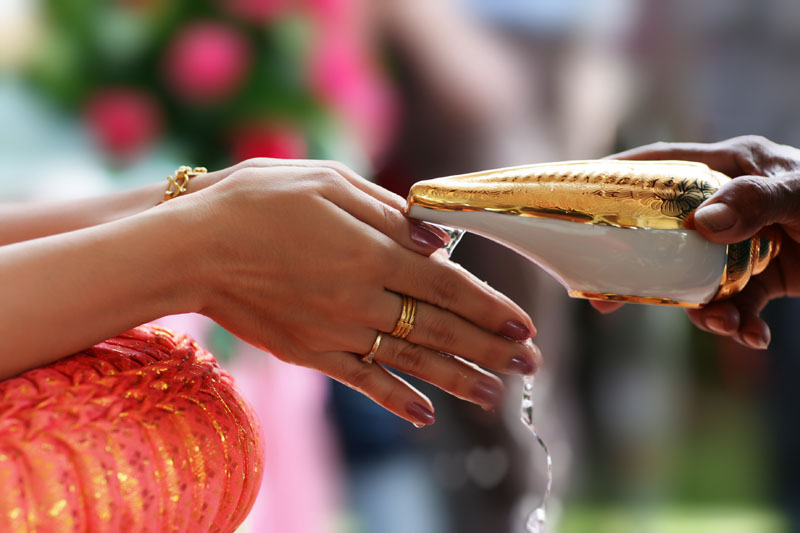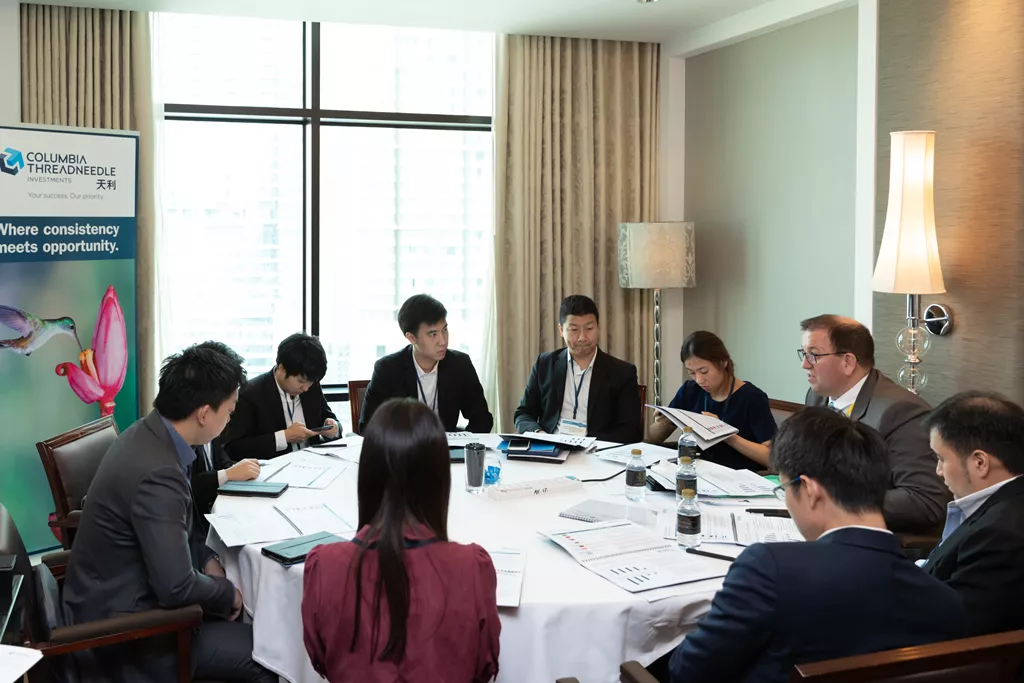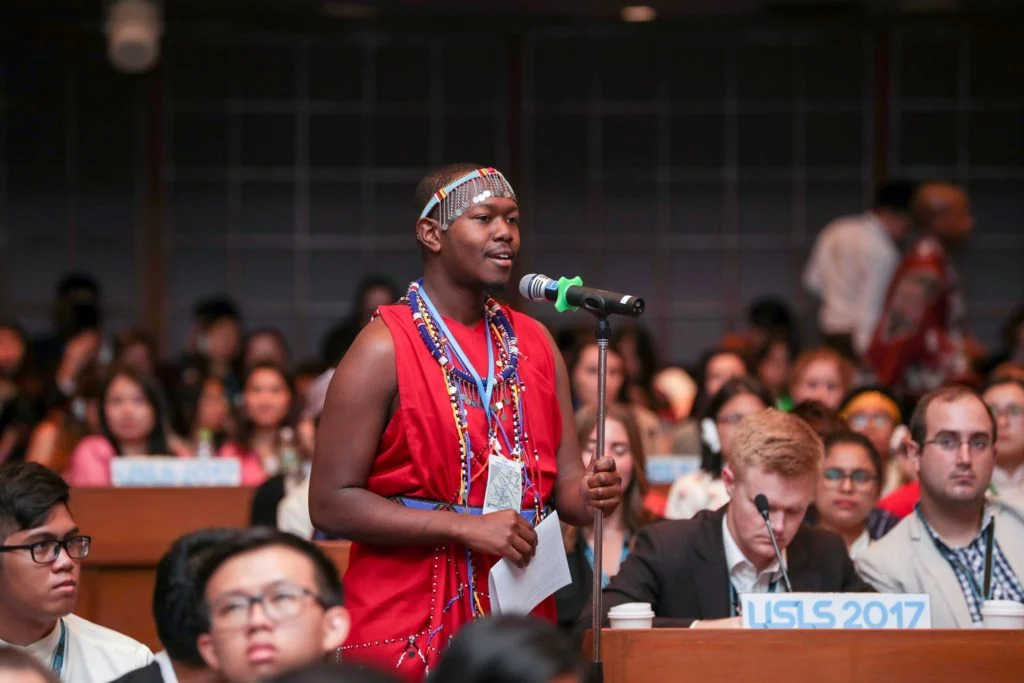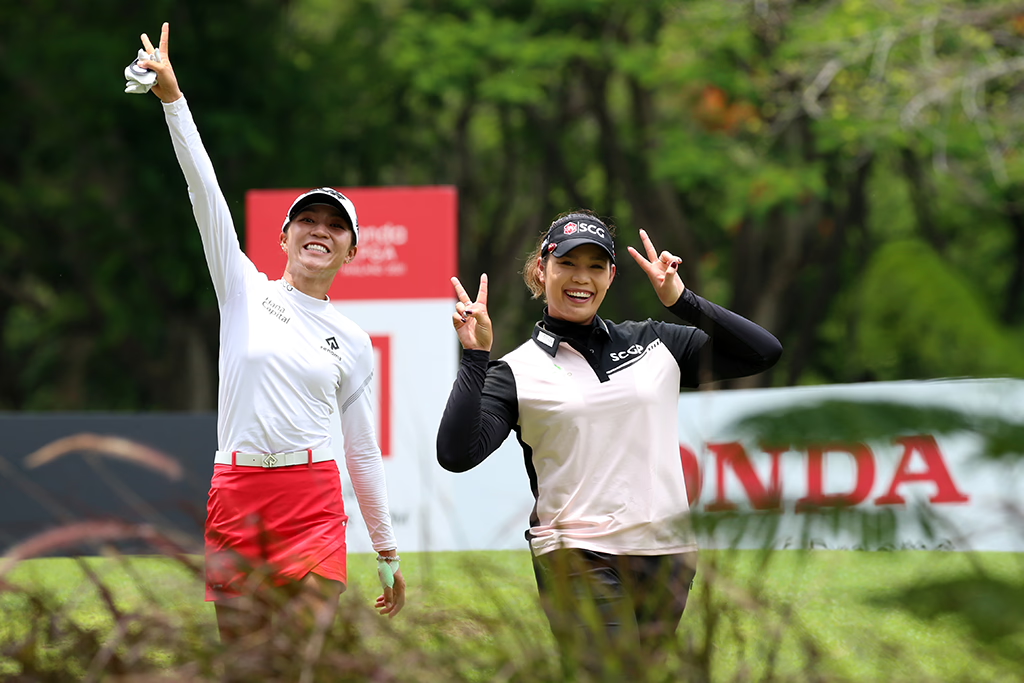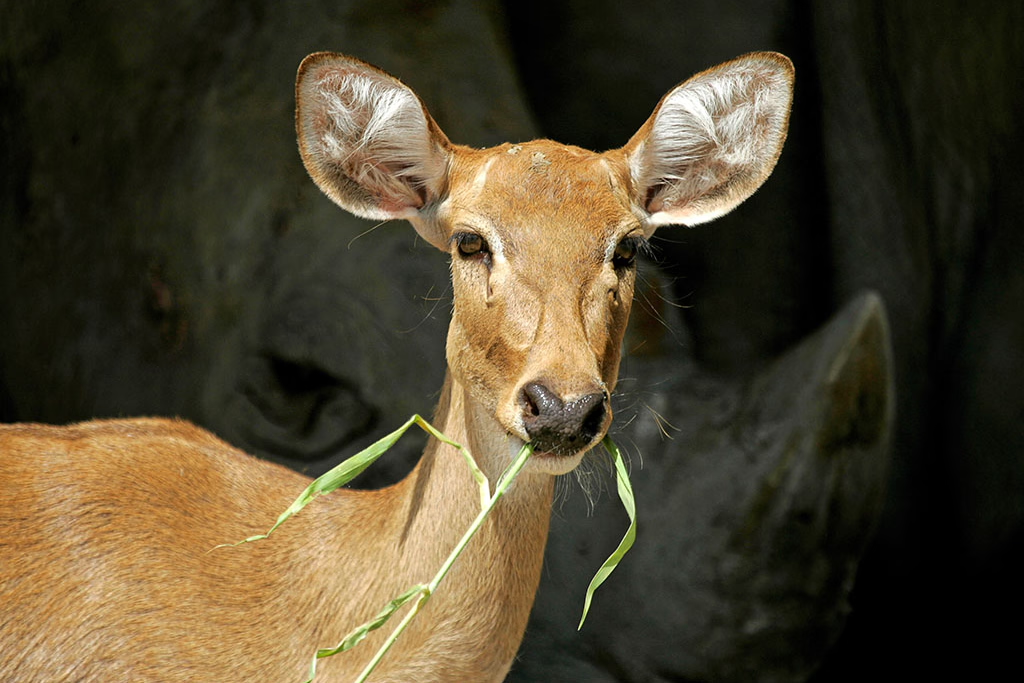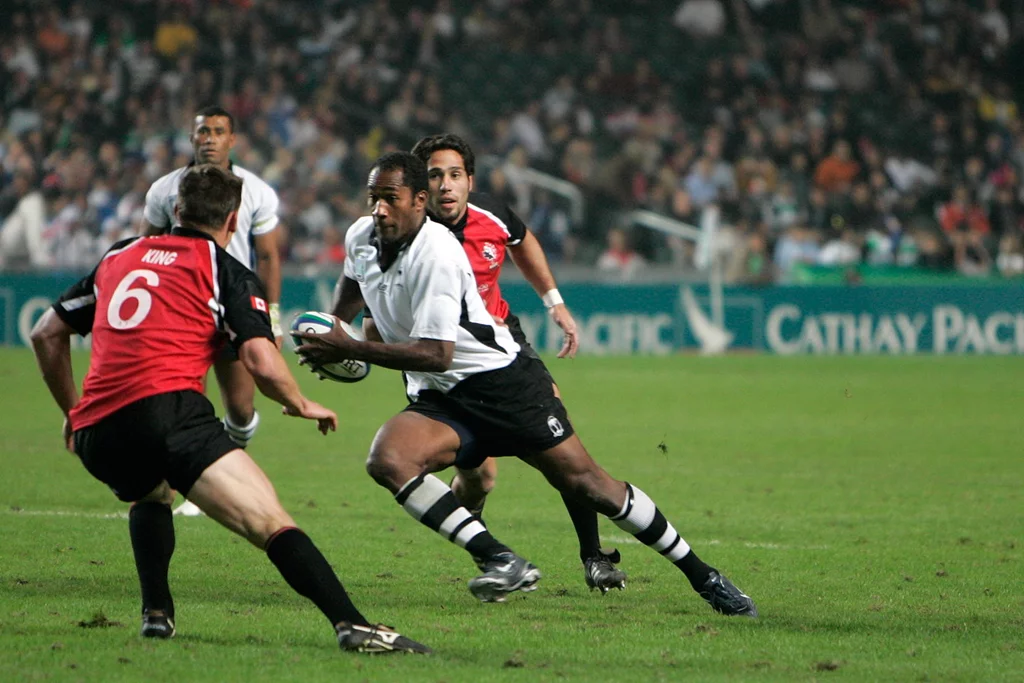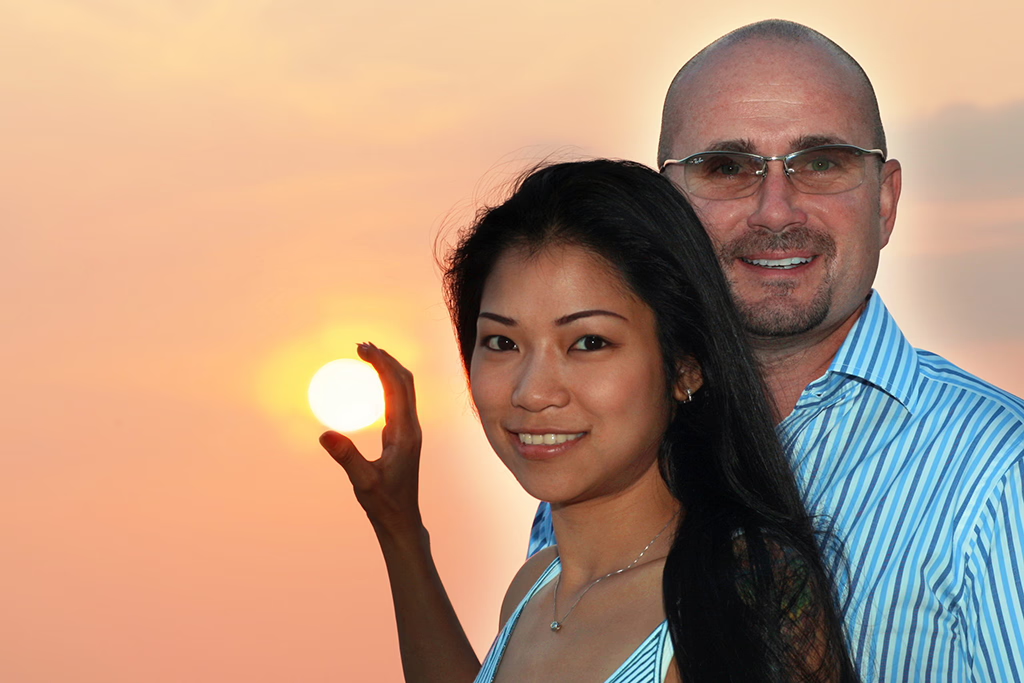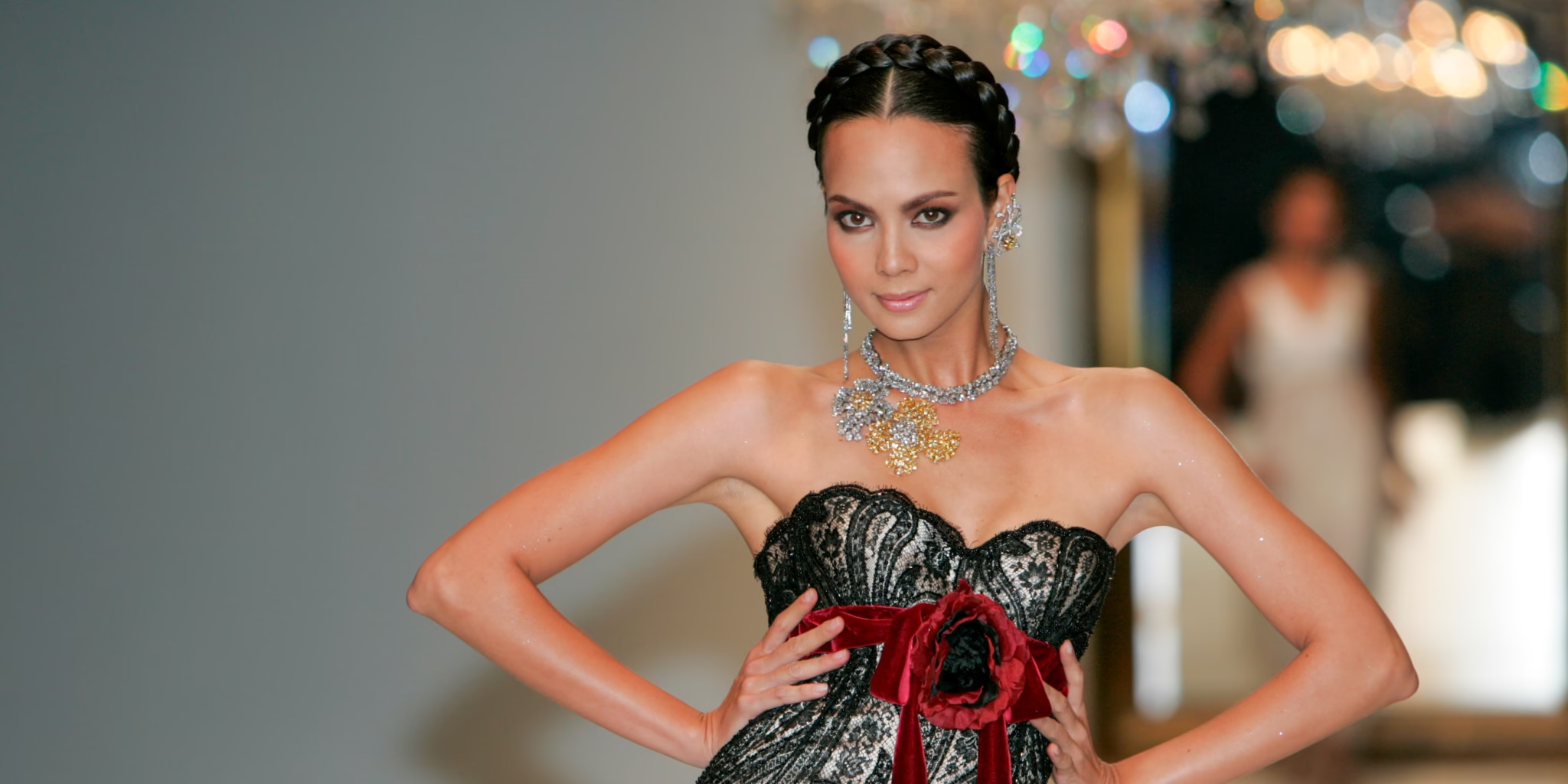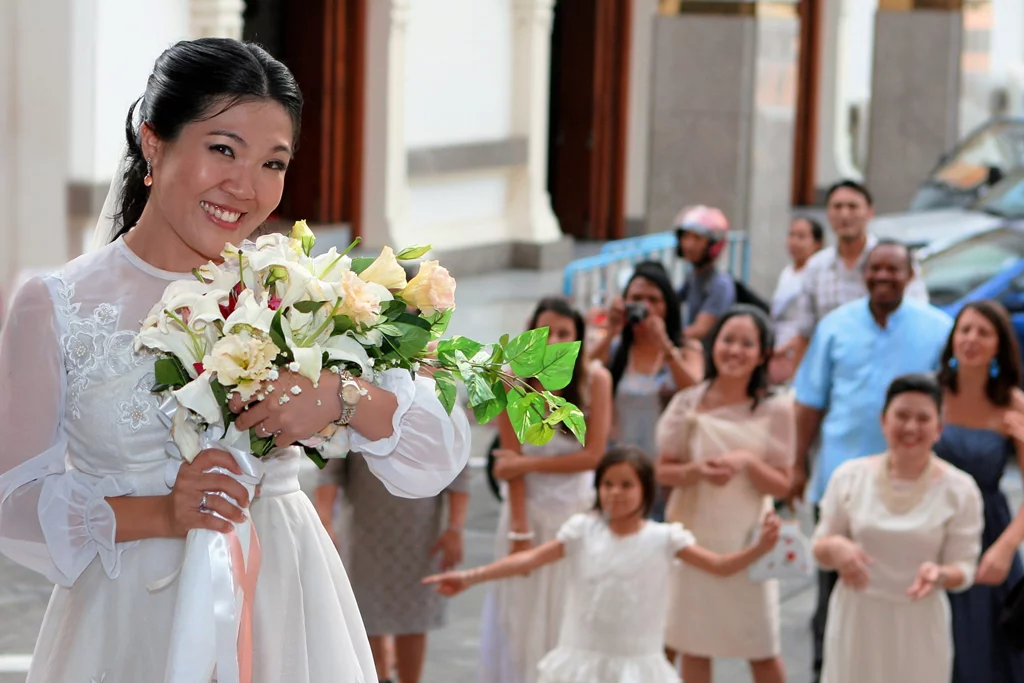During the Thailand wedding ceremony, the bride and groom then lead others in offering food and refreshments to the monks; using a large spoon which they jointly hold, the couple placed steamed rice into the alms bowl of the senior monk. Inviting participation from their elders, relatives and friends, the wedding pair will then offer an array of food to the monk, including prepared dishes, fresh fruits and desserts.
Surrounded by bridesmaids and relatives, the most senior member of the family will anoint the forehead of the girl and her new husband. Three white dots, prepared from powder made and blessed earlier by the monks, will be dabbed onto each forehead in a triangular shape. This signifies the Triple Gem of Buddhism.
The central focus of inspiration and devotion for Buddhists is the Triple Gem (also known as the Three Treasures and the Three Refuges). These three are Buddha, Dharma, and Sangha.
Buddha means ‘Enlightened One’ or ‘Awakened One,’ and is generally used to refer to the founder of Buddhism. There have been other Buddhas before him; however, er will be other Buddhas in the future.
The word Dharma (in Sanskrit, Dharma) is often used to refer to the Buddha’s teachings, but it also means the eternal Truth which the teachings convey to us. Dharma is threefold: the Dharma that we study, that which we practice, and the Dhamma of Realisation.
Sangha means ‘community’ or ‘assembly.’ The word has two meanings in proper Buddhist usage: the community of disciples (whether ordained or not) who have gained realisation of any of the stages of Awakening; and the community of ordained disciples–bhikkhus (monks) and bhikkhunis (nuns).
The Thailand wedding morning proceedings were over; it was time to eat and relax for an hour or so until the next stage of the proceedings. The early morning sun was still just low enough to attempt a couple of portraits, which I did in the family compound before grabbing a much-needed cup of coffee and some sustenance.
After resting for a while, it was time to convene at the bridegroom’s office about a mile and a half away from the bride’s family’s house. This was to be the starting point for the Khan Maak procession

